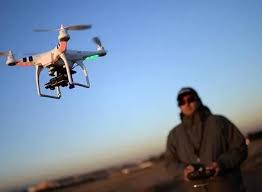Counter-Drone Technologies: How to Detect and Prevent Unauthorized UAVs
With the rapid advancement and widespread availability of drone technology, the threat of unauthorized UAVs (Unmanned Aerial Vehicles) has become a major concern for security agencies, governments, and private organizations. Drones can be used for illegal surveillance, smuggling, airspace violations, and even potential attacks. To counter these threats, advanced counter-drone technologies have been developed to detect, track, and neutralize unauthorized drones before they cause harm.
Introduction
With the rapid advancement and widespread availability of drone technology, the threat of unauthorized UAVs (Unmanned Aerial Vehicles) has become a major concern for security agencies, governments, and private organizations. Drones can be used for illegal surveillance, smuggling, airspace violations, and even potential attacks. To counter these threats, advanced counter-drone technologies have been developed to detect, track, and neutralize unauthorized drones before they cause harm.
Why Counter-Drone Technology is Essential
Drones can easily bypass traditional security measures due to their small size, high maneuverability, and silent operation. Critical infrastructures such as airports, military bases, power plants, and government buildings are particularly vulnerable to drone threats. Counter-drone technology ensures that unauthorized UAVs are detected in time, allowing security forces to take necessary actions to prevent potential dangers.
Methods for Detecting Unauthorized Drones
Detecting rogue drones requires a combination of multiple technologies to ensure accuracy and efficiency. Some of the most effective drone detection methods include:
Radar Systems – Radar can detect drones by tracking their movement and distinguishing them from birds or other airborne objects. Modern radars are designed to identify the unique flight patterns of UAVs.
Radio Frequency (RF) Sensors – Many drones communicate with their operators via radio signals. RF sensors can detect and analyze these signals to locate the drone and sometimes even its pilot.
Acoustic Sensors – These sensors detect the unique sound signatures of drone propellers, making them useful in areas where radar and RF detection are limited.
Optical and Infrared Cameras – High-resolution cameras with AI-powered image recognition can visually identify drones, even in low-light conditions. Infrared cameras detect heat signatures, making them effective for night surveillance.
Countermeasures to Prevent Unauthorized Drones
Once a drone is detected, security agencies must act quickly to prevent any potential threats. Various counter-drone technologies are used to neutralize or deter unauthorized UAVs:
RF Jamming – This technique disrupts the communication between the drone and its operator, forcing it to land or return to its starting point. However, jamming may interfere with other radio communications.
GPS Spoofing – By sending false GPS signals, this method tricks the drone into believing it is in a different location, causing it to drift off course or land in a designated safe area.
Drone Capture Systems – Some security agencies deploy drones equipped with nets to physically capture unauthorized UAVs mid-air. This method is commonly used in stadiums and restricted airspaces.
Laser-Based Systems – High-energy laser weapons can disable drones by overheating their components, effectively neutralizing the threat without collateral damage.
Directed Energy Weapons (DEWs) – These systems use electromagnetic pulses or microwave signals to fry the drone’s electronics, rendering it useless. DEWs are being developed for military and high-security applications.
Birds of Prey – In some cases, specially trained birds such as eagles have been used to intercept and capture small drones. This method is environmentally friendly but has limited effectiveness against larger UAVs.
Challenges in Counter-Drone Technology
Despite advancements in counter-drone technology, several challenges remain:
Distinguishing Drones from Other Objects – Small drones can be mistaken for birds or other flying objects, leading to false alarms. AI-powered recognition is improving, but challenges still exist.
Limited Detection Range – Some drone detection systems have a short range, making it difficult to detect high-altitude UAVs or those flying beyond visual line-of-sight.
Legal and Ethical Concerns – Using countermeasures like jamming or laser systems near populated areas may interfere with civilian infrastructure, raising legal and ethical concerns.
Rapid Advancements in Drone Technology – As drone manufacturers develop more advanced UAVs with stealth capabilities and autonomous navigation, counter-drone systems must constantly evolve to keep up.
Future of Counter-Drone Technology
The future of counter-drone technology lies in the integration of artificial intelligence, machine learning, and automated defense systems. AI-driven drone detection will improve accuracy, while autonomous interception drones will provide real-time security responses. Governments worldwide are investing in research to develop next-generation counter-drone solutions that are faster, more precise, and capable of handling swarms of drones simultaneously.
Conclusion
As drone technology continues to evolve, so do the threats associated with unauthorized UAVs. Counter-drone technologies are essential for ensuring security and preventing potential dangers posed by rogue drones. From advanced detection systems to cutting-edge neutralization methods, the ongoing development of counter-UAV measures will play a critical role in protecting airspace, infrastructure, and national security.
.png)






Leave a Comment
Your email address will not be published. Required fields are marked *